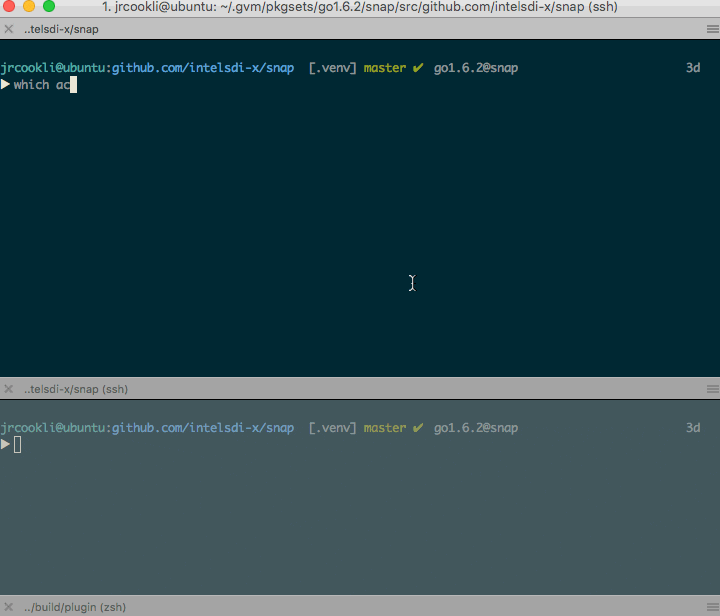Plugin Packaging
Snap supports the ACI (App Container Image) format defined in the App Container spec (appc) for packaging a plugin.
When snap loads a plugin it detects the plugins type. If the plugin is a binary
the plugin is run by snapd which handshakes with the plugin via reading its
standard output. If the plugin is packaged as an ACI image it is extracted
and snap executes the program referenced by the exec field.
Why
In cases where we can not or do not want to compile our plugin into a statically linked binary we can load a plugin packaged as an ACI image. This provides an obvious advantage for plugins written in Python, Ruby, Java, etc where the plugins dependencies, potentially including an entire Python virtualenv, could be distributed with the plugin.
How
Since Snap leverages the appc spec for images we recommend using the acbuild tool for creating images.
In the example below we package one of the mock plugins creating a plugin package which can be loaded achieving the same result as if we had simply loaded the binary version of the plugin.
- Get the acbuild tool
- Download the latest binary release and install into your PATH.
- Make snap
- From the root of snap run:
make
- From the root of snap run:
- Using the acbuild tool create an image containing the mock collector plugin.
- From the
build/plugindirectory run the following commands.acbuild begin acbuild set-name intelsdi-x/snap-plugin-collector-mock1 acbuild copy snap-plugin-collector-mock1 /bin/snap-plugin-collector-mock1 acbuild set-exec /bin/snap-plugin-collector-mock1 acbuild write snap-plugin-collector-mock1-linux-x86_64.aci acbuild end
- From the
That's it!
